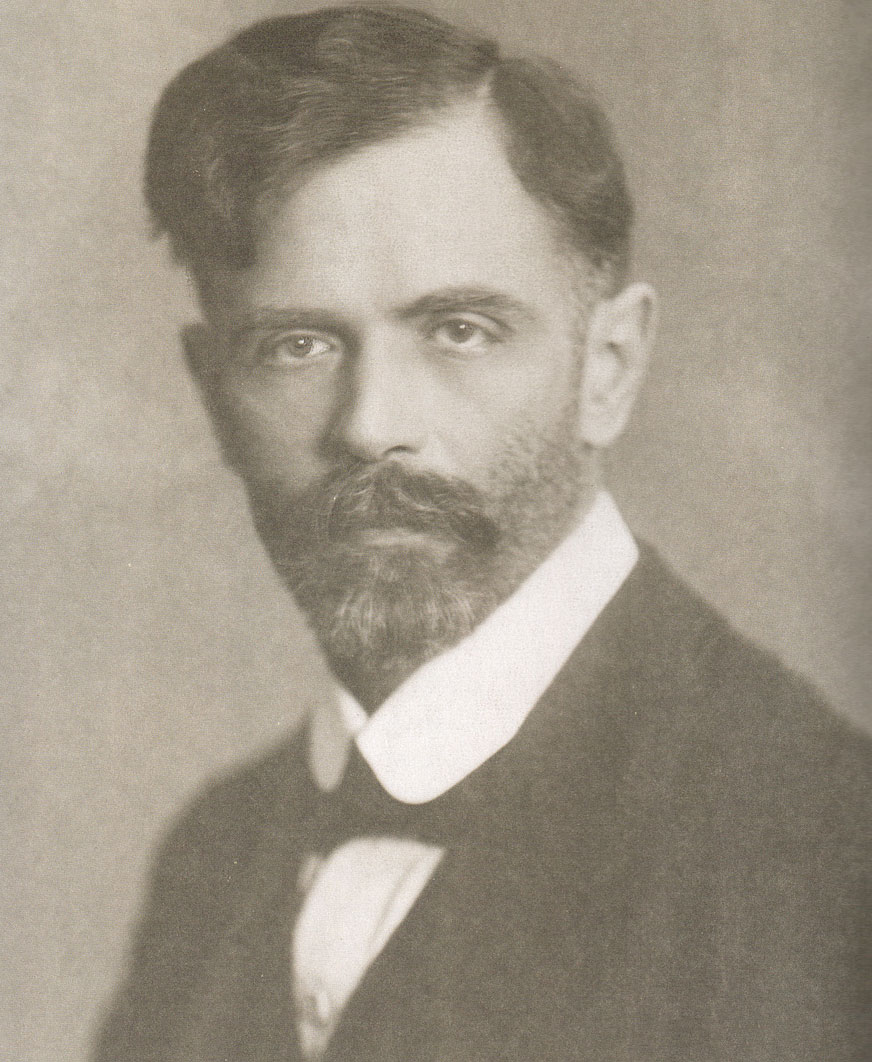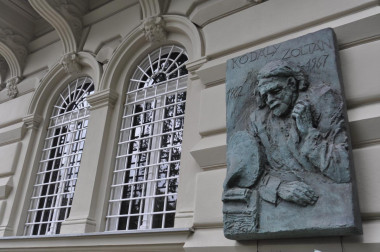
Zoltán Kodály (16 December 1882 Kecskemét – 6 March 1967 Budapest) was one of the most outstanding personalities of 20th century Hungarian culture: composer, ethnomusicologist, music pedagogue and linguist. His internationally acknowledged concept of music education is the basis for general music teaching in Hungary and also plays an important role in the training of professional musicians. Zoltán Kodály played a prominent role in Hungarian public life, holding several public posts and being a member or head of numerous boards and committees. He was also acquainted with many influential public figures (musicians, artists, scholars and politicians).
His life in a nutshell:
|
1882: |
Zoltán Kodály is born in Kecskemét on 16 December. |
|
1892-1900: |
Earliest compositions. |
|
1900: |
Compositional studies at the Liszt Music Academy and academic studies at the Eötvös Kollégium and at Péter Pázmány University (Autumn). |
|
1905: |
Meets first wife Emma Schlesinger and Béla Bartók. First expedition to collect folk-songs. |
|
1906: |
Doctoral dissertation: The Strophic Structure of Hungarian Folk-Songs. Debut of Summer Evening (22 October). In collaboration with Bartók, his Hungarian Folk-Songs appears (December). |
|
1906-1907: |
Studies in Berlin and Paris. |
|
1907: |
Teaches at the Music Academy in Budapest (Autumn). |
|
1910: |
First composer's evening in Budapest (17 March). Debut of First String Quartet(Zurich, 29 May). Marriage to Emma Schlesinger (3 August). First folksong-collecting trip to Transylvania (Summer). |
|
1914: |
Finishes his Duo for Violin and Cello Op. 7. |
|
1915: |
Solo Sonata for Cello Op. 8. |
|
1916: |
Completion of the song-cycle Seven Songs (Late Melodies) Op. 6. |
|
1917-1919: |
Active as a music critic. |
|
1918: |
Second composer's evening in Budapest (7 May). |
|
1919: |
Assistant director of the Music Academy (February). Suspended; disciplinary hearings initiated. |
|
1920: |
Successfully refutes the investigatory commission's accusations. |
|
1921: |
Teaches once again at the Music Academy (September). |
|
1923: |
World premiere of Psalmus Hungaricus (19 November). |
|
1925: |
First performance of choral works for children (2 April). |
|
1926: |
First foreign performance of Psalmus Hungaricus in Zurich (18 June). First performance of Háry János at the Budapest Opera House (16 October). |
|
1927: |
Premiere of the Háry Suite in Barcelona (24 March). Debut as conductor, leading Psalmus Hungaricus in Amsterdam (20 April). First trip to England (December). |
|
1929: |
Children's Choirs - a study in wich he first formulates his pedagogic principles. |
|
1930: |
His first visit to his birth place (March). Toscanini and the New York Philharmonic perform Summer Evening (3 April). Lecturer at Péter Pázmány University (Autumn). Fritz Busch premieres the orchestral version of Dances of Marosszék in Dresden (28 November). Finishes Mátra Pictures for mixed choir. |
|
1932: |
Premiere of Spinning Room at the Budapest Opera House (24 April). Celebratory concerts marking Kodály's 50th birthday (December). |
|
1933: |
Dances of Galánta first performed in Budapest (23 October). |
|
1934: |
Member of National Literary and Artistic Committee. Finishes Jesus and the Treaders, with biblical text. |
|
1936: |
Premiere of his Te Deum in Matthias-church (2 September). |
|
1937: |
Hungarian Folk Music appears - also published in numerous foreign languages. |
|
1939: |
Mengelberg conducts the Peacock Variations in Amsterdam (23 November). |
|
1941: |
The Chicago Symphony Orchestra premieres his Concerto (6 February). |
|
1943: |
Elected associate member of the Hungarian Academy of Arts and Sciences (14 May). |
|
1945: |
Premiere of the Missa Brevis in the cloakroom of the Budapest Opera House, while the city is still under siege (11 February). |
|
1946: |
Named as president of the Hungarian Artistic Committee (16 January). |
|
1946-1947: |
First trip to America. Conducts numerous concerts featuring his own works. |
|
1947: |
Awarded the title of honorary citizen of Kecskemét. First trip to the Soviet Union. |
|
1947-1950: |
President of the Hungarian Academy of Arts and Sciences. |
|
1950: |
Forms the ethnomusicological branch of the Hungarian Academy of Arts and Sciences. |
|
1951: |
Debut performance of the State Folk Ensemble with Kálló Folk-Dances (April). First volume of the Archive of Hungarian Folk Music appears (November). |
|
1954: |
Emma suffers a broken leg; Kodály moves into the hospital with her (23 August). |
|
1955: |
Radio performance of Bartók's complete works for piano (1 January). Premiere of the Hymn of Zrínyi at the Music Academy (18 December). |
|
1955-1956: |
Leader of festivals to celebrate Bartók. |
|
1956: |
Leaves Budapest (around 20 October). |
|
1957: |
Returns to Budapest (8 January). |
|
1958: |
After 49 years of marriage to Kodály, Emma dies (22 November). |
|
1959: |
Marries Sarolta Péczely (18 December). |
|
1960: |
Visits England. Receives an honorary doctorate from Oxford (April-June). Supervises the recording of his works (Summer). Taken to hospital after suffering a heart attack (1 December). |
|
1961: |
Elected president of the International Folk-Music Committee in Quebec (August). At the Lucerne Festival, the Symphony is performed in his presence (16 August). |
|
1962: |
Kodály's 80th birthday. Large-scale celebrations in Budapest and across the world (December). |
|
1964: |
Gives speech at the dedication ceremony of the new building of the Kecskemét Music Primary School. Elected honorary president during the Budapest conference of the International Society for Musical Education (June-July). His pedagogical methods reach the world at large. |
|
1965: |
Receives the Herder Prize in Vienna (April). Second trip to the United States (July-August). |
|
1966: |
Premiere of his last completed work, Laudes Organi, in Atlanta (June). |
|
1967: |
Dies from a heart attack (6:45 AM, 6 March). |
Source: the website of the Kodály Institute http://kodaly.hu/kodaly_en_kodaly/important-dates-107382


